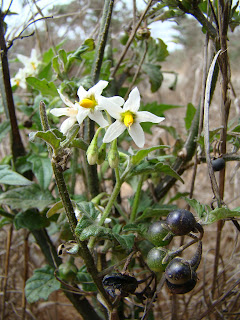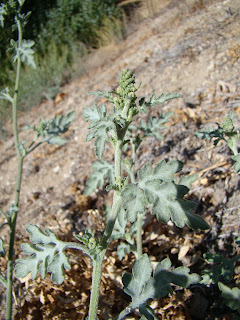Calypso bulbosa in the forest
Calypso orchid (Calypso bulbosa) is the rare plant. As the name implies it is the member of the orchid family that is not common in Northern hemisphere but quite abundant in tropics. Strangely enough orchids are about as numerous as Asteraceae and which family holds more species is still unclear. To give you an example, vanilla plant is an orchid. Yes, the same plant that they harvest to produce vanilla extract. Orchids are also famous as 'hobby" plants as lots of them require meticulous care. Lots of Orchidaceae have flowers of unusual shape, colour or fragrance that make them popular decorative plants.
Calypso (Venus's slipper) close-up
But not our little calypso. This particular genus (Calypso which means concealed) grows in the northern forest. The several species I found were blooming wild in Crescent City, the northernmost town of California (that is not counting Smith River). It grows in other northern counties as well. The plant is rather small and grows in the shade so it is indeed easy to miss and the species are solitary. The name bulbosa refers to the bulbous corms (swollen parts of underground stem) whose function is to store stuff to survive winters.
Calypso flower in profile
Calypso is also known as Venus' slipper or fairy slipper because of its shoe-like shape of the flower. The coloring is pink spots and stripes on white background.
One interesting fact about Calypso is that it sometimes attracts bees by its yellow anther-like hairs but they produce no nectar so bees feel deceived and avoid visiting the plant again.



















































